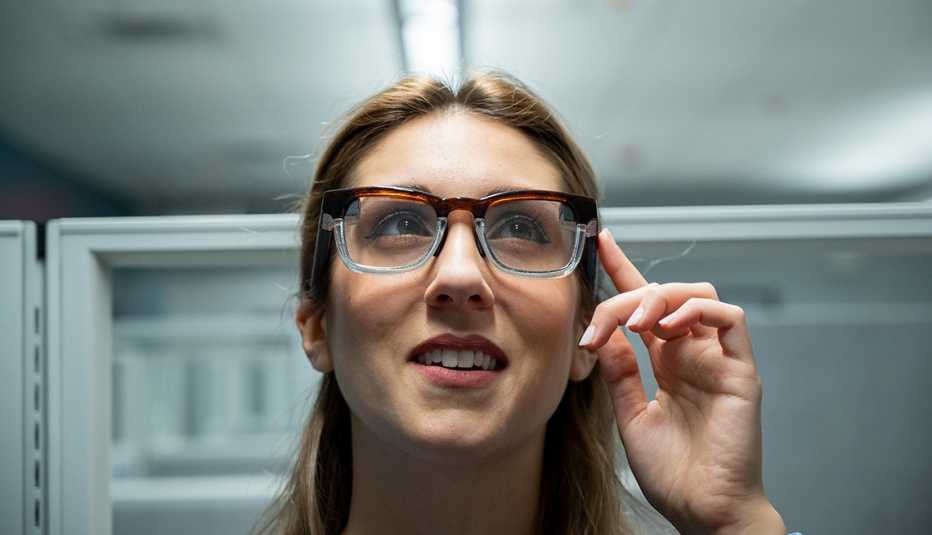AARP Hearing Center


Although hearing loss is a very common sensory loss — affecting one-third of all American adults between the ages of 65 and 74 and nearly half of those older than 75 — solutions to hearing problems have been slow to materialize. Until recently, hearing aids only made things louder, not necessarily clearer. And scientists have yet to discover a way to repair damage to the inner ear.
Now, though, thanks to such advances in technology and medicine as artificial intelligence and gene therapy, hearing research is producing significant innovations. Here are some of them, in various stages of development.
1. Eyeglasses that turn speech into subtitles
The big idea: You'll be able to read what people are saying.
How it might work: An app on your smartphone would listen to a conversation and transcribe the speech into sentences in real time. The text would be delivered instantaneously to your enhanced eyeglasses (which would create subtitles, in addition to correcting your eyesight!) using augmented reality (technology that superimposes information on the world we see). The result: It would be like watching TV with subtitles, except without a screen.


Why it's exciting: Automatic speech-to-text programs have proliferated in recent years. Live computer-generated captions are now available on most videoconferencing platforms, and smartphone apps can generate real-time transcriptions for in-person conversations. The problem: Users must be in front of a computer or looking at a phone, which detracts from full social engagement, says Raja Kushalnagar, an information technology professor at Gallaudet University who studies speech-to-text technology for people with hearing loss. Now companies are making subtitles more natural by using “smart glasses” technology, which can project text to a user's field of vision in a comfortable, nonintrusive way. Kushalnagar, who is deaf, recently tested out a prototype. “I was able to walk on the trail with my son and hold a conversation with him easily, which was harder with the phone app,” he says. “I could also cut vegetables and cook as I listened to him talk about his day."
Who might benefit: While subtitled conversation could solve a problem for people with hearing loss, these “smart” glasses with subtitles could find other users, such as for non-native speakers, who might find it easier to read a new language than listen to it. Also, subtitling software could be combined with real-time language translation apps, which would make foreign travel a breeze.

































































More on Health
Smart Hearing Aids Go Beyond Help With Audio
Cutting-edge technology can detect your heart rate or a fallMild Hearing Loss? Hearing Aids Aren't the Only Answers
'Hearables,' specialized headphones and other tech tools can provide sound solutions at a lower cost